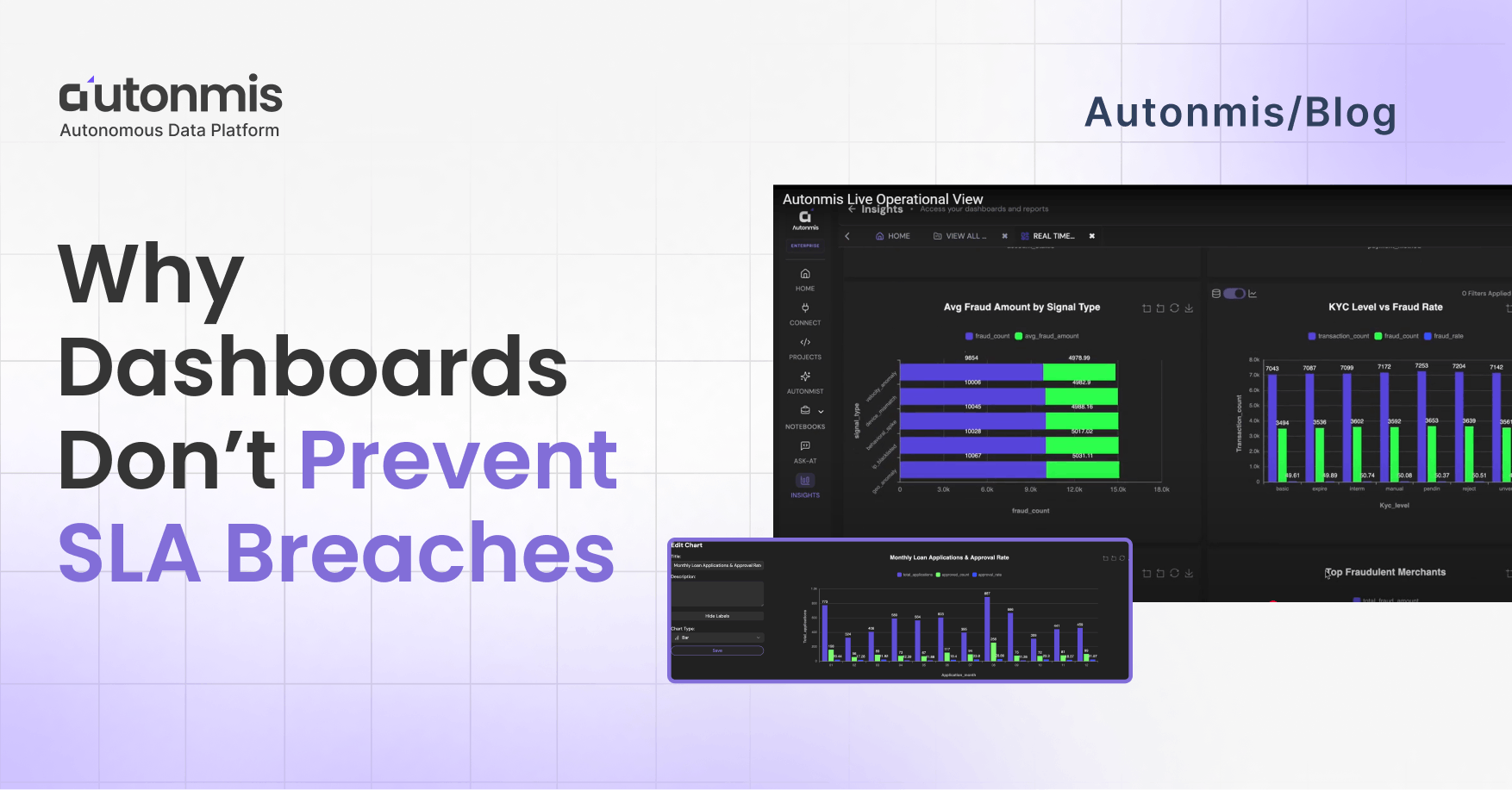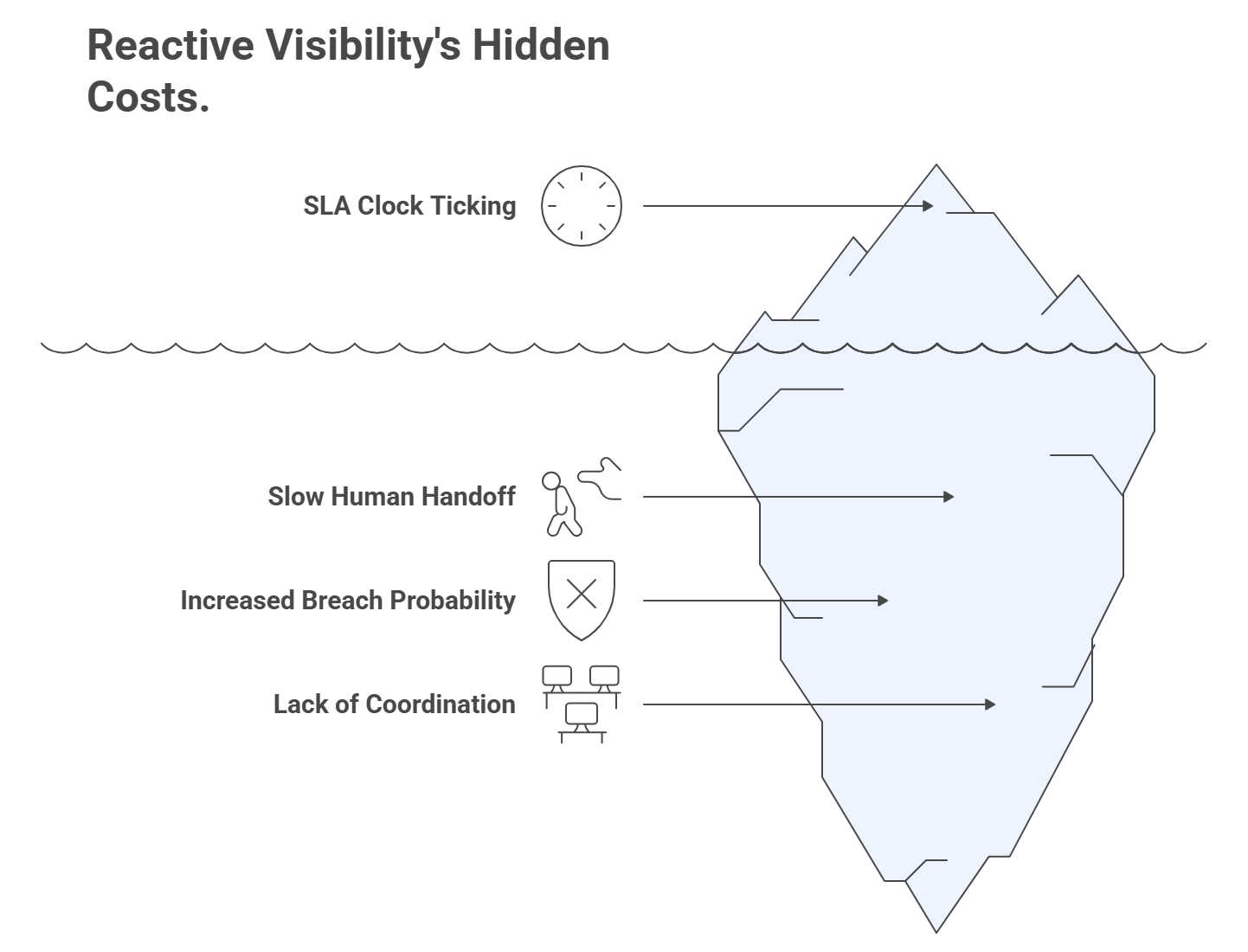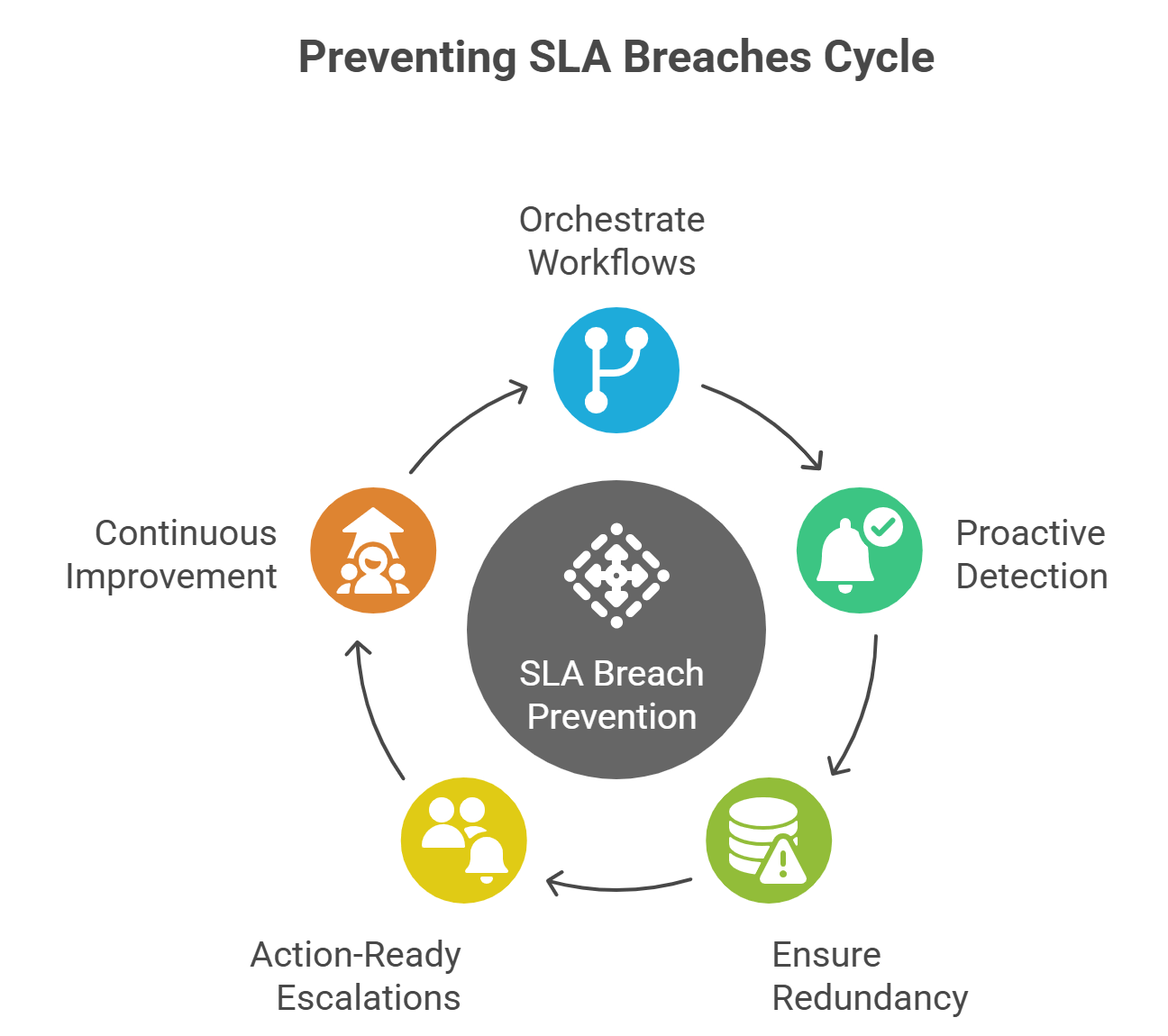Table of Contents
Loading table of contents...
Why Dashboards Don’t Prevent SLA Breaches
Dashboards reflect past performance but don’t prevent SLA breaches. Explore actionable strategies that ensure reliability and improve operational efficiency.
August 19, 2025


AB
Every ops leader has lived this story:
Your dashboards are green. Metrics look fine. The SLA reports are on track. Yet your team still wakes up to an angry customer email: “You breached your SLA again.”
If dashboards were the answer, this wouldn’t happen. But they aren’t.
Dashboards are mirrors, they reflect the state of your systems. They don’t intervene, they don’t orchestrate, and they definitely don’t save you when pipelines stall at 2 a.m.
So, let’s talk about why Dashboards Don’t Prevent SLA Breaches, and what actually does.
1. Dashboards Are Postmortems in Disguise
Dashboards tell you what already happened. They’re lagging indicators dressed up with beautiful charts.
By the time your dashboard shows SLA risk, the breach is either:
- Already in motion, or
- Averted by sheer human intervention behind the scenes.
High-level leaders don’t need more pretty reports. They need systems that act in real time, not summarize yesterday’s near-misses. True strategies to prevent SLA breaches come from orchestration and automation, not colorful charts.
2. Breaches Don’t Come from Metrics Alone
SLAs don’t break because a line went red. They break because:
- A credit bureau API slowed down.
- A disbursement job got stuck behind a queue spike.
- An escalation playbook wasn’t triggered on time.
Dashboards don’t solve any of these. They highlight the symptom, not the root cause. Real SLA reliability and preventing SLA breaches, lives in orchestration, failover paths, and automated decisioning, not charts.
Checkout: How Predictive Analytics Improves Operational Efficiency
3. The Hidden Cost of “Reactive Visibility”
Leaders often say: “At least dashboards give us visibility.” True. But visibility without actionability is expensive theater.
Consider this:
- By the time your ops team notices an SLA clock ticking on a dashboard, they’ve already lost valuable minutes.
- The bigger the org, the slower the human handoff: one team notices, another investigates, a third decides.
- Each handoff increases the probability of a breach.
Dashboards centralize attention, but they don’t coordinate response. That gap is where SLA promises die, and why you need better ways to control SLA breaches than reactive visibility.

4. SLA Breaches Are Workflow Failures, Not Reporting Failures
Think of a loan disbursement SLA. The contract says funds must reach accounts in 30 minutes.
What causes the breach?
- Payment rail congestion.
- Retry logic failing silently.
- No automated rerouting to a backup bank.
The breach doesn’t happen on the dashboard. It happens in the workflow, where dependencies aren’t resilient enough to absorb shocks.
Until workflows themselves are self-healing, dashboards will always be late to the party, which makes them ineffective in preventing SLA breaches on their own.
The Illusion of “Visibility”
Leaders often defend dashboards by saying: “At least they give us visibility.”
Yes, but visibility without actionability is just theater.
Consider this:
- Dashboards centralize awareness, but they don’t coordinate response.
- Every additional human handoff (Ops → Eng → BizOps) adds minutes, and minutes are the difference between SLA compliance and breach.
- Dashboards become a comfort blanket. Teams think they’re protected, but breaches keep happening anyway.
Real SLA reliability, and the only sustainable ways to control SLA breaches come from systems that act in real time, not humans staring at charts.
Checkout: What is Operational Intelligence (OI)? Complete 2025 Overview
What Actually Prevents SLA Breaches
Dashboards are necessary, but not sufficient. They’re the scoreboard, not the playbook.
What prevents SLA breaches is a different class of capability: workflow orchestration + automation.
- Orchestration over observation
Systems that reroute tasks when a dependency fails. E.g., if Bank A’s rails are congested, reroute to Bank B automatically. - Proactive detection
Alerts tied to early signals (queue length, API response time) before SLA timers even start burning. - Built-in redundancy
Backup pipelines and alternate API providers ready to go, not discovered during a postmortem. - Action-ready escalations
Not just “Ops dashboard turns red,” but runbooks that auto-trigger: notify the right owner, attach logs, and even start remediation scripts. - Continuous improvement
Each breach analyzed → workflows updated. Not another chart added, but real fixes to retry logic, dependencies, and orchestration.

This is where platforms like Autonmis come in. They’re not “just another dashboard” - they’re a control tower built around preventing SLA breaches.
Dashboards Still Have a Place - But Not This Place
Don’t get me wrong: dashboards matter. They’re great for storytelling, trend analysis, and alignment.
But let’s be clear - they’re for reporting, not prevention.
- Use them to hold retrospectives, align teams, and track improvements.
- Don’t mistake them for safety nets.
Dashboards are the scoreboard. The actual game is played in your pipelines, queues, and orchestration engines, the true ways to control SLA breaches.
Checkout: How to Transition from Simple to Scalable Data Ingestion
Final Word: From Pretty Charts to Real Resilience
If you’re a CTO, Head of Ops, or SRE lead, here’s the uncomfortable truth:
Your SLA reliability will never be solved by another dashboard.
Dashboards make problems visible. Reliability comes from making problems irrelevant — because your systems handled them before customers ever noticed.
The shift is simple but hard: stop asking, “How do we see SLA risks faster?” and start asking, “How do we design workflows so those risks never materialize?”
That’s how you prevent SLA breaches. And no dashboard can do that for you.
Recommended Blogs

10/17/2025

AB
How GFF 2025 Changes the Way BFSI Will Operate in India

10/13/2025

AB
Top 5 Ways to Improve Lending Operations for Business Growth
Actionable Operational Excellence
Autonmis helps modern teams own their entire operations and data workflow — fast, simple, and cost-effective.